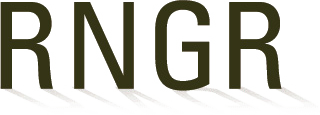
Bromus (marginatus)
|
Dave Skinner PMC Farm Manager USDA NRCS - Pullman Plant Materials Center Room 211A Hulbert Hall WSU Pullman, Washington 99164-6211 509-335-9689 509-335-2940 (fax) abbie@wsu.edu http://plant-materials.nrcs.usda.gov/wapmc |
|
| Family Scientific Name: | Poaceae | ||
|---|---|---|---|
| Family Common Name: | Grass | ||
| Scientific Name: | Bromus marginatus Nees ex Steud. | ||
| Common Synonym: | Bromus carinatus Hook. & Arn. | ||
| Common Name: | Mountain brome | ||
| Species Code: | BRMA4 | ||
| General Distribution: | Arid and semi-arid portions of western North America where mean annual precipitation is 10-20 inches. Usually found in dry,open grassland and open Ponderosa pine forest. Some authorities recognize B. marginatus and B. carinatus as separate species and some combine the two as one species. For the purposes of plant propagation, there is no difference. | ||
| Propagation Goal: | plants | ||
| Propagation Method: | seed | ||
| ProductType: | Container (plug) | ||
| Time To Grow: | 4 Months | ||
| Target Specifications: | Tight root plug in container. | ||
| Propagule Collection: | Seed ripens in early July in the Pullman area. It is collected when the inflorescence begins to dry and the seed is in the soft to hard dough stage but before it shatters from the inflorescence. Seed can be stripped from the inflorescence or the inflorescence can be clipped from the plant. Harvested seed is stored in paper bags at room temperature until cleaned. | ||
| Propagule Processing: | Small amounts are rubbed to free the seed, thencleaned with an air column separator. Larger amounts are threshed with a hammermill or a plot thresher, then cleaned with air screen equipment. Clean seed is stored in controlled conditions at 40 degrees Fahrenheit and 40% relative humidity. | ||
| Pre-Planting Treatments: | Seed germinates well without pretreatment. If plants are being grown for seed production purposes, the seed should be treated with Carboxin or a similar compound to prevent head smut (Ustilago bullata). | ||
| Growing Area Preparation/ Annual Practices for Perennial Crops: |
In January seed is sown in the greenhouse in 10 cu. in. Ray Leach Super cell conetainers filled with Sunshine #4 and covered lightly. Head space of ¬ to « inch is maintained in conetainers to allow deep watering. A thin layer of pea gravel is applied to prevent seeds from floating. Conetainers are watered deeply. | ||
| Establishment Phase: | Medium is kept moist until germination occurs. Germination usually begins in 5 days and is complete in 10 days. | ||
| Length of Establishment Phase: | 2 weeks | ||
| Active Growth Phase: | Plants are watered deeply every other day and fertilized once per week with a complete, water soluble fertilizer containing micro-nutrients. | ||
| Length of Active Growth Phase: | 3 months | ||
| Hardening Phase: | Plants are moved to the cold frame in late March or early April, depending on weather conditions. They are watered every other day if the weather is cool, and every day during hot, dry spells. | ||
| Length of Hardening Phase: | 2-4 weeks | ||
| Other Comments: |
Consult with a licensed pesticide professional about any possible pesticide usage. Before applying any pesticide, read and follow the directions on the label. No insect problems have been noted. Clean seed retains high germination for at least eight years under cool, dry storage conditions. High heat and/or high humidity reduce seed storage life. Plants tend to be short-lived. However, they re-seed readily and may crowd out other species in restoration plantings. |
||
| References: |
Hassell, et al. 1996. Seeding Rate Statistics for Native and Introduced Species. USDI National Park Service and USDA Natural Resources Conservation Service. Hitchcock, C. Leo, and Arthur Cronquist. 1973. Flora of the Pacific Northwest. University of Washington Press. Seattle, WA. USDA, NRCS. 2004. The PLANTS Database, Version 3.5 (http://plants.usda.gov). National Plant Data Center, Baton Rouge, LA 70874-4490 USA. |
||
Citation:
Skinner, David M,. 2004. Propagation protocol for production of Container (plug) Bromus marginatus Nees ex Steud. plants USDA NRCS - Pullman Plant Materials Center Pullman, Washington. In: Native Plant Network. URL: https://NativePlantNetwork.org (accessed 2025/11/02). US Department of Agriculture, Forest Service, National Center for Reforestation, Nurseries, and Genetic Resources.



